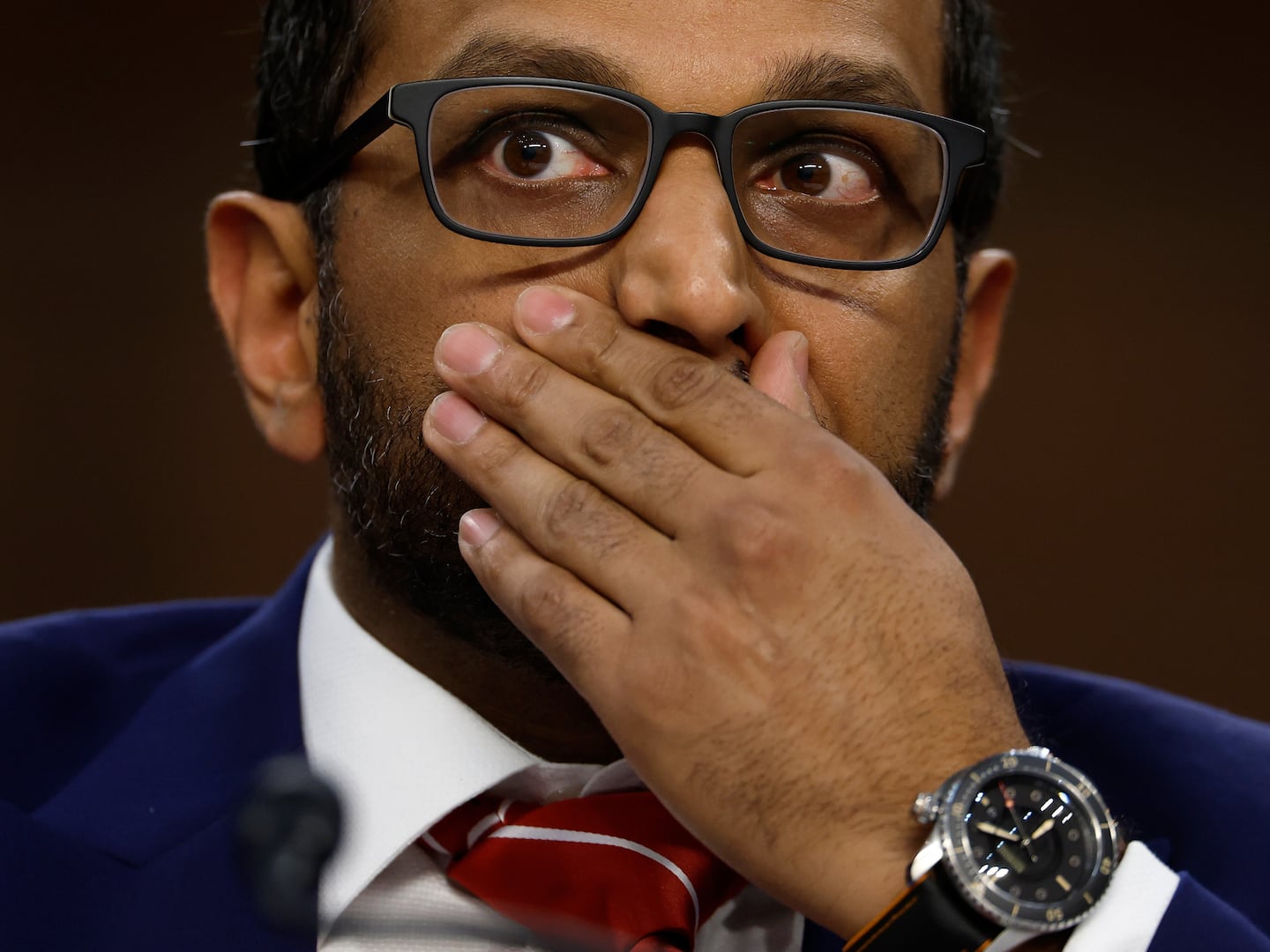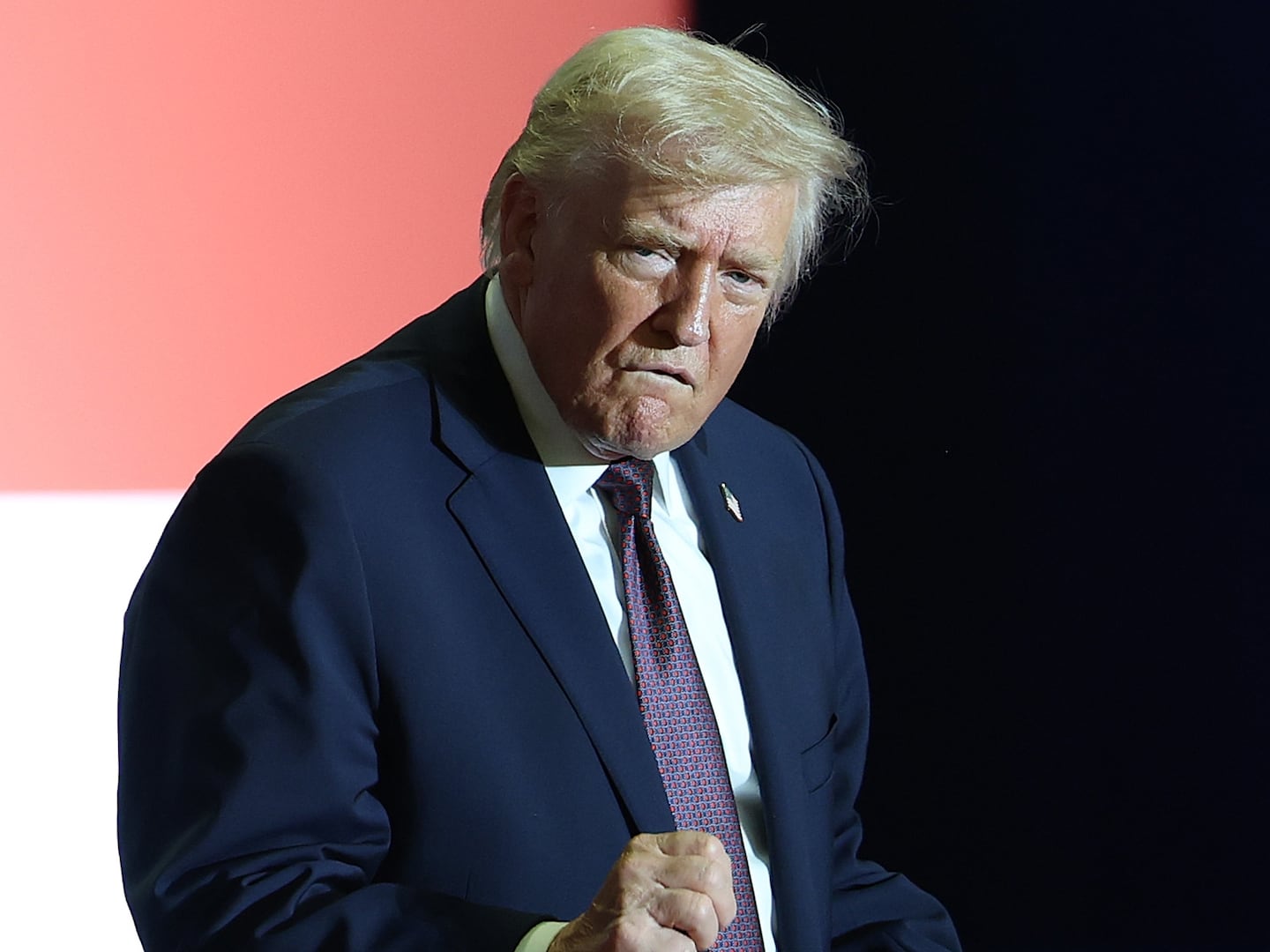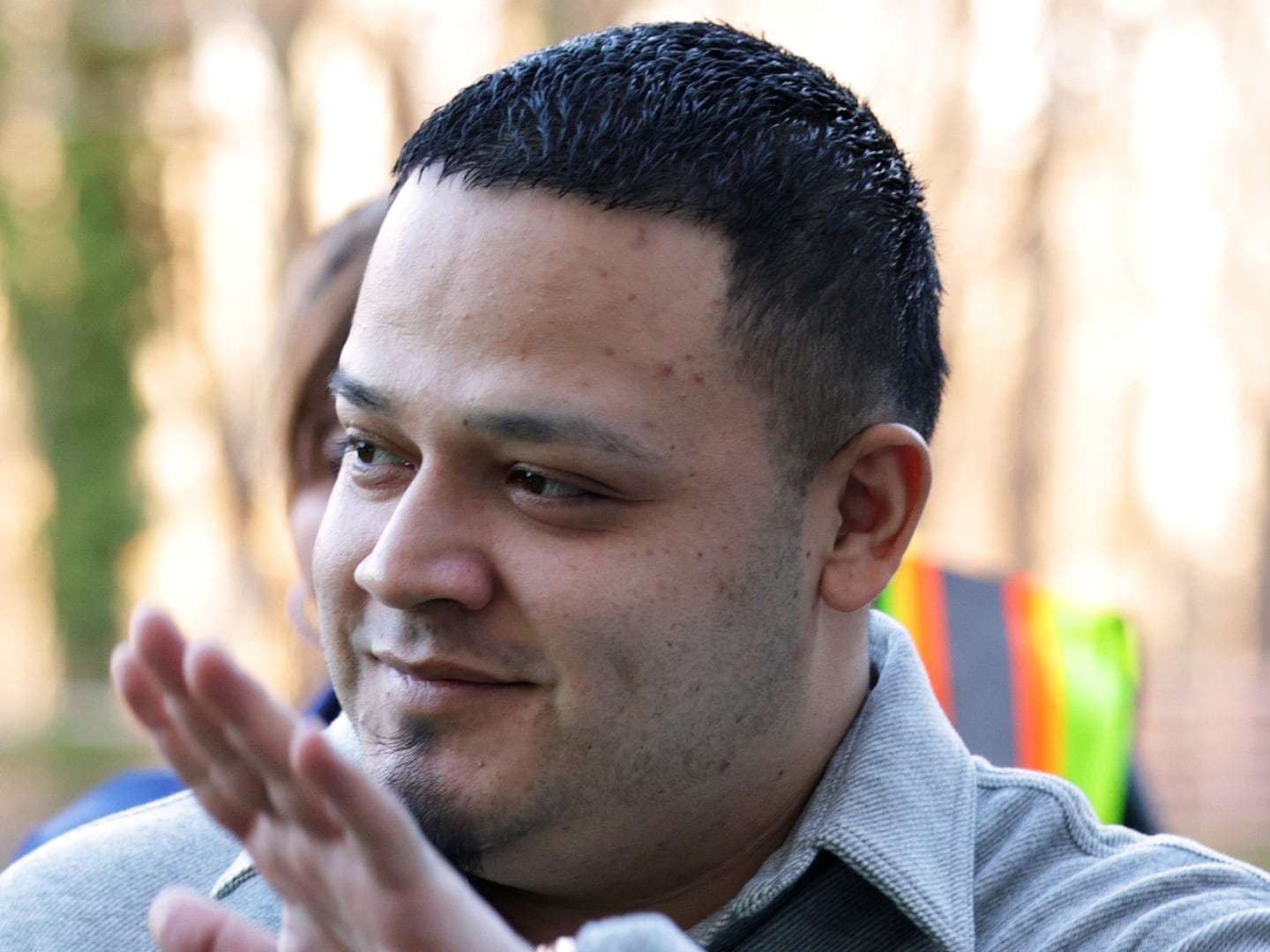The new Donald Trump indictment only goes after the former president—at least for now—but that doesn’t mean he’s the only person who may have broken the law.
Special Counsel Jack Smith likely decided to keep the indictment narrowly targeted at Trump only, so he could expedite the case and not muddle a courtroom with separate but related defendants. The indictment, however, also describes six “co-conspirators” who, while not charged Tuesday, will likely face charges themselves at some point.
While Smith doesn’t name these six co-conspirators, he provides enough clues to decipher the identities of at least five of them. (There are a few good guesses for the sixth co-conspirator, but without the ability to sufficiently narrow it down to just one person, we won’t be speculating, much to the relief of our lawyers.)
Regardless, the first five co-conspirators are, without a doubt, these people. This is how we know:
Co-Conspirator No. 1: Rudy Giuliani

Giuliani has long been wrapped up in Trump’s efforts to overturn the 2020 election. The indictment describes co-conspirator 1 as an “attorney who was willing to spread knowingly false claims and pursue strategies that the Defendant's 2020 re-election campaign attorneys would not.”
That, unfortunately, doesn’t narrow it down all that much in Trumpworld. But elsewhere in the indictment, co-conspirator 1 is alleged to have met with the Arizona House Speaker at the time, Rusty Bowers. As Bowers testified to the Jan. 6 Committee last year, Giuliani wanted the Arizona legislature to decertify the 2020 election results. Bowers asked for proof that there was fraud. Giuliani told him, “We don’t have the evidence, but we have lots of theories.”
That quote appears in the indictment, attributed to co-conspirator 1. And we know from Bowers’ earlier testimony that it was Giuliani who said those exact words to him.
Giuliani’s attorney also didn’t respond to a request for comment from The Daily Beast. However, in a statement Tuesday night, a lawyer for Giuliani admitted to The New York Times that it “appears that Mayor Giuliani is alleged to be co-conspirator No. 1.” In a statement to The Daily Beast, Giuliani’s political adviser, Ted Goodman, said: “Every fact Mayor Rudy Giuliani possesses about this case establishes the good faith basis President Donald Trump had for the actions he took during the two-month period charged in the indictment. This indictment eviscerates the First Amendment and criminalizes the ruling regime’s number one political opponent for daring to ask questions about the 2020 election results.”
Co-Conspirator No. 2: John Eastman

John Eastman speaks next to Rudy Giuliani as Trump supporters gather ahead of the president’s speech to contest the certification by the U.S. Congress of the results of the 2020 U.S. presidential election in Washington on January 6, 2021.
Jim Bourg/ReutersCo-conspirator 2 is described as an “attorney who devised and attempted to implement a strategy to leverage the Vice President’s ceremonial role overseeing the certification proceeding to obstruct the certification of the presidential election.”
That could be a few people. But the additional details in the indictment make clear that it’s Eastman. There’s the circumstantial evidence, like Eastman authoring a “two-page memorandum”—as it’s described in the indictment—about how to overturn the election.
But the real smoking gun is found in the quotes from co-conspirator 2 in the indictment.
Among the quotes, the document notes that co-conspirator 2 wrote in an email that he and Trump had “been made aware that some of the allegations (and evidence proffered by the experts) has been inaccurate” and that signing a new affirmation “with that knowledge (and incorporation by reference) would not be accurate.”
That email has already been made public in a previous court hearing involving Eastman, with a judge reading those exact quotes, attributed to Eastman.
Eastman’s lawyer issued a statement late Tuesday night, deriding the indictment as “a misleading presentation of the record to contrive criminal charges against Presidential candidate Trump and to cast ominous aspersions on his close advisors.” Attorney Charles Burnham, stated flatly that said his client is not discussing a plea deal with the feds and won't even consider it, promising that, “If Dr. Eastman is indicted, he will go to trial. If convicted, he will appeal.”
Co-Conspirator No. 3: Sidney Powell

Sidney Powell.
Jonathan Ernst/ReutersCo-conspirator 3 is described in the indictment as “an attorney whose unfounded claims of election fraud the Defendant privately acknowledged to others sounded ‘crazy.’” Right off the bat, that sounds like Powell. But it gets much clearer later.
The indictment noted that co-conspirator 3 “filed a lawsuit against the Governor of Georgia falsely alleging ‘massive election fraud’ accomplished through the voting machine company's election software and hardware.”
It was Powell who filed that lawsuit. And just in case we weren’t entirely sure before, the indictment clarifies that co-conspirator No. 3's Georgia lawsuit was dismissed on Dec. 7, 2021.
That’s the date Powell’s lawsuit was shot down.
Powell did not immediately respond to comment while an attorney for Powell declined to comment to The Washington Post.
Co-Conspirator No. 4: Jeffrey Clark

Then-Acting Assistant U.S. Attorney General Jeffrey Clark in 2020.
Yuri Gripas/ReutersThe indictment lists co-conspirator 4 as “a Justice Department official who worked on civil matters and who, with the Defendant, attempted to use the Justice Department to open sham election crime investigations and influence state legislatures with knowingly false claims of election fraud.”
That certainly sounds like Clark, who Trump wanted to elevate to the position of acting attorney general from his role at the time as the acting head of the civil division.
But once again, the identity of co-conspirator 4 gets clearer later in the document.
The indictment clarifies that co-conspirator 4 met with Trump at the White House on Dec. 22, 2020.
“Co-Conspirator 4 had not informed his leadership at the Justice Department of the meeting, which was a violation of the Justice Department’s written policy restricting contacts with the White House to guard against improper political influence,” the indictment said Tuesday.
Clark’s meeting with Trump on Dec. 22 is noted in the Jan. 6 committee’s final report, which also noted that his meeting with Trump was “a clear violation” of DOJ policy, “which limits interactions between the White House and the Department’s staff.”
A little over a week later, co-conspirator 4 reported to the acting attorney general that Trump was considering making him the acting attorney general. We know that was something Trump and Clark were discussing.
But the coup de grace is that co-conspirator 4 drafted a letter saying the Justice Department had “identified significant concerns that may have impacted the outcome of the election in multiple States.”
We know from the Jan. 6 report that Clark wrote that letter.
Clark did not respond to comment by the time of publication.
Co-Conspirator No. 5: Kenneth Chesebro
The indictment merely describes the fifth nameless co-conspirator as “an attorney who assisted in devising and attempting to implement a plan to submit fraudulent slates of presidential electors to obstruct the certification proceeding.” But it’s this person’s role in the overarching scheme—and his private communications—that positively identify him.
(And it’s definitely a “him,” given that one email obtained by prosecutors refers to him as “the gentleman.”)
Smith’s federal investigators credit this mystery man as the person who authored legal memos on Nov. 18 and Dec. 9, 2020, that laid out the plan to employ willing Republicans to serve as fake electors.
Once again, the Jan. 6 Committee’s extensive investigation allows us to line this up, too.
In an email to high-ranking Georgia Republicans obtained by congressional investigators, attorney Kenneth Chesebro talks about his Nov. 18 and Dec. 9 memos and instructs them on how exactly they should go about drafting these fake documents and officially submitting them.
What’s more, the indictment also refers to private emails where this person shared his ideas with an “Arizona attorney,” who in turn sent an email framing the plan this way: “We would just be sending in ‘fake’ electoral votes to Pence so that ‘someone’ in Congress can make an objection when they start counting votes, and start arguing that the ‘fake’ votes should be counted.”
Last year, The New York Times reported that Arizona lawyer Jack Wilenchik spoke to Chesebro, then wrote an email to Trump adviser Boris Epshteyn saying the very same thing: “We would just be sending in ‘fake’ electoral votes to Pence so that ‘someone’ in Congress can make an objection when they start counting votes, and start arguing that the ‘fake’ votes should be counted.”
Chesebro hung up as soon as a Daily Beast reporter identified himself.
Co-Conspirator No. 6: The Mystery Political Consultant
The only remaining mystery is the sixth co-conspirator: a “political consultant who helped implement a plan to submit fraudulent slates of presidential electors to obstruct the certification proceeding.”
There are a number of good guesses for who this particular person could be, but the key detail seems to be this:
“On December 7, Co-Conspirator 1 received the Wisconsin Memo and the Fraudulent Elector Memo. Co-Conspirator 1 spoke with Co-Conspirator 6 regarding attorneys who could assist in the fraudulent elector effort in the targeted states, and he received from Co-Conspirator 6 an email identifying attorneys in Arizona, Georgia, Michigan, Nevada, New Mexico, Pennsylvania, and Wisconsin.”
That email doesn’t appear to have been previously disclosed during the Jan. 6 committee’s investigation. It seems like it’s only a matter of time, however, until we see the whole thing.









